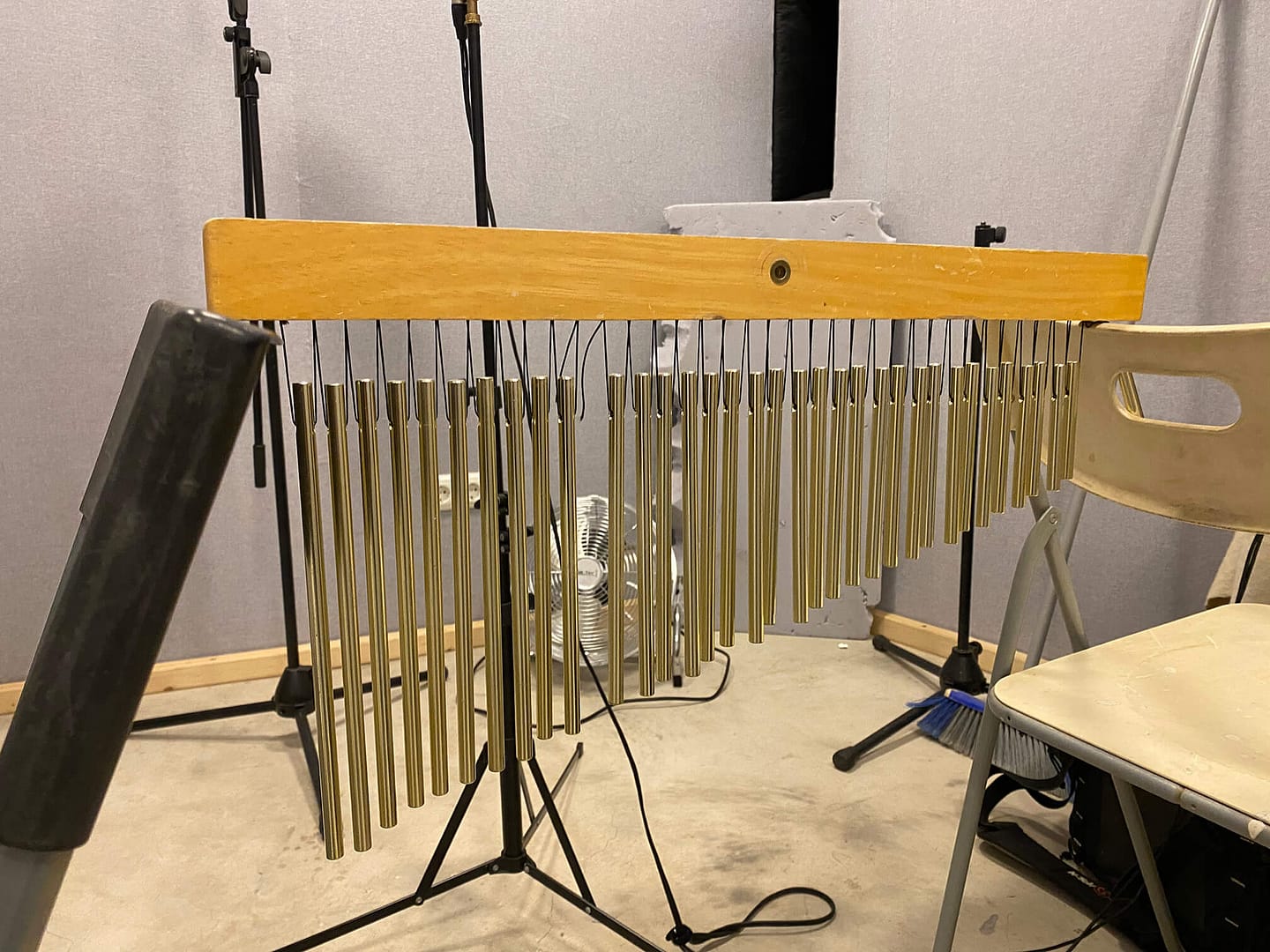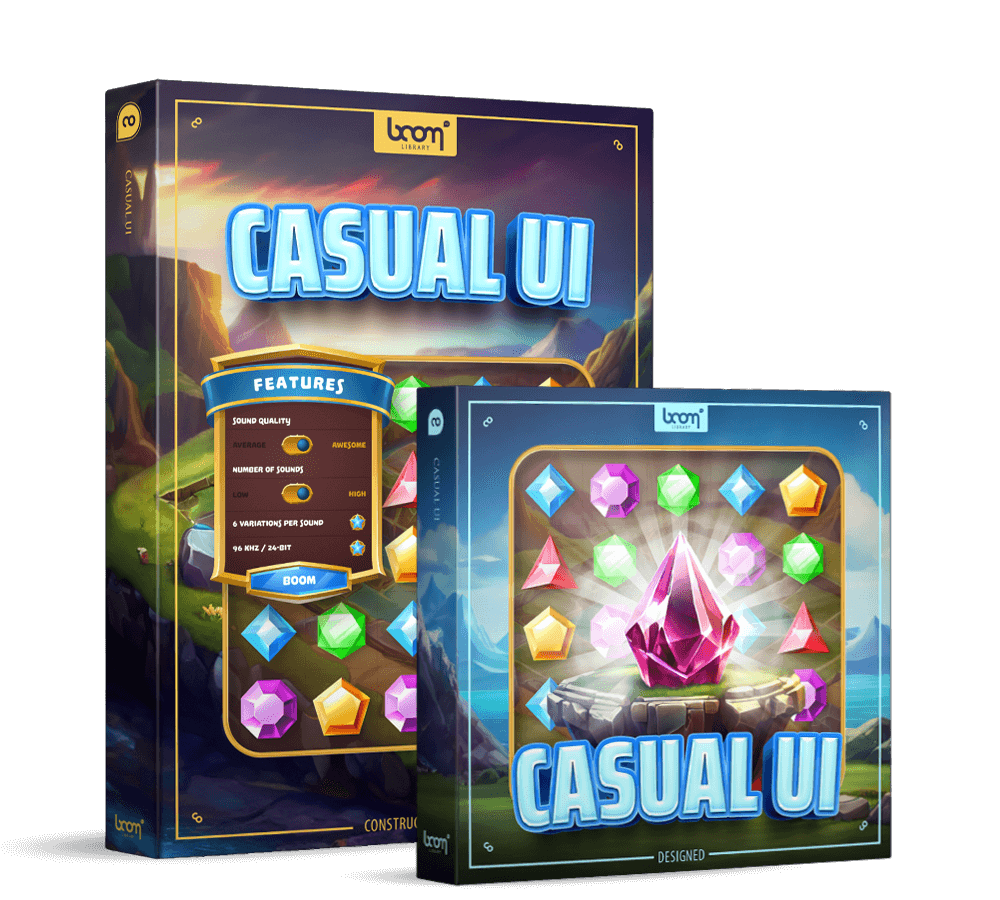MORE THAN CASUAL
A behind-the-scenes look at CASUAL UI.
Programs make sounds just like the animals.
Over the past libraries, we’ve learned a lot about animal communication. Harbor seals clap to warn others of impending danger (ALIEN LIFE). Birds signal for mating or to communicate food sources (SEASONS OF EARTH – EUROPEAN SUMMER). The list goes on, but the point all comes to how animals let each other know what is happening in the world around them through certain audio cues. In the same way, we need to know what’s happening in our digital realities: on the screen, on the menu, in the game.
Which brings us to our latest library: CASUAL UI.
It’s easy to overlook user interface sounds, but they play a crucial role in creating meaningful user experiences. I mention those cues above because we tend to imitate them in the digital world. When a certain sound comes from our phone or computer, we automatically know there’s a message waiting for us, or an update, or so on.
Companies have conditioned us with certain sounds. They’re called “earcons”, and they represent some bit of information relayed to us by a specific, recognizable tone. Like when you hear the instant message sound, and everybody in the room immediately and unconsciously reaches for their mobiles… that’s conditioning.
Earcons are either based on real-world sounds or they can be metaphorical. Either way, sound designers either must create them from scratch, or go to a massive array of sound libraries to find just the right one for their project.
This was our issue. We work on a lot of casual games and user interfaces. So, our own Benjamin Drumeaux and a few others thought about how to create a set of sounds that they and others can use as a go-to set for most of the projects they work on. And CASUAL UI was born.
KEEPING IT COOL
At BOOM Library, we are no strangers to user interface and tutorial video sound design, doing a lot of work in this department ourselves. “We do the sound design for a lot of casual games,” Benjamin shares. “Like match-three games or puzzle games, which you play between work and your way home on the bus. You know, these easily digestible games. And that was kind of the starting point for this library.
“You get to know the game sounds. And because we do a lot of that and develop that kind of aesthetic a lot, we know what works and what doesn’t.”

MOTIVATION AND VISION
Doing this kind of work regularly, we need a lot of easily accessible, high-quality sounds created for this purpose. “The sounds must be light, digestible, dazzling with a strong focus on rewarding tonality,” Benjamin discusses the design instructions on a typical project. “Then we have different libraries we choose from and searching around is always a bit of work.
“But there’s always a restriction on the budget and not that much time to do them,” he continues. “You don’t have time to go in the recording studio, set up the microphones, and record whatever you need and then to edit and do the processing. There’s often no time for that.”

“I like to work on these casual games because at BOOM Library we’re known for our trailer sound design and these big hard-hitting, epic sounds, and the casual scene is the exact opposite of this. It’s super light, playful, sparkling. It’s nice and relaxing.”
COMING UP WITH SOUNDS
For CASUAL UI, we had to drum up unusual ways to audibly represent casual games and modern interfaces (think also VR, AR, tutorial videos, edutainment and so on), to create those earcons that you can use in your own products. We put together a big set of sounds that from our experience are key to such sound design tasks.
“We took the normal casual game as reference and looked up what the most important parts of the game are,” Benjamin explains. “We came up with different vendor categories and thought which was the most important stuff for us.”
So, for example, poof sounds, or the shimmer category to create the rewarding tonality or the rewarding emotion when the player is playing a game. When they hit a specific high score, or unlock something like a new upgrade, or just have some achievements…”
We created 15 distinct categories for the Construction Kit to get our flow started:
- click
- shimmer
- plop
- rattle
- wipe
- effect
- whoosh
- material wood
- card
- material paper
- coin
- material liquid
- poof
- material rock
- impact
And then 9 more for the Designed kit:
- confirm
- poof
- match
- level up
- pop up
- zap
- whoosh
- deny
- click
All the sounds in the collection fit the user interface / casual game genre, designed specifically with them in mind. They’re typically short and quick, and if you heard them, you could probably even guess their intended use because of your own ear-conditioning.

ORGANIC AND PROCESSED
Benjamin and the team recorded a lot of organic sounds to ensure a unique, fresh, and snappy vibe to the effects. “We wanted to capture a kind of natural effect,” Benjamin explains. “So, we recorded some mouth whooshes for example, and some hand movements. Normal material like water, rock, paper, and we’d just handle them in different ways to get a variety of sounds out of it all.
“We’d take rocks and drop them or break them. Like in some casual UI games, like a match-three game, you sometimes have some crystals which explode, so we recorded rock breaks for that. Then there was paper, which we’d crumble and tear.
“But on the other hand, there’s a good amount of abstract, processed sounds to get the kind of effects typical of the user interface topic.”
IT ALL GOES POOF
The library was a lot of fun to record, but some sounds stand out. “The poof sounds were fun because they were pretty difficult to record,” Benjamin says. “Poofs are tiny, playful explosions, which are always needed in these kinds of games. We had to come up with an idea how to get to the ‘poof zone’. We did some cloth recordings and performed some different processes on these clothes sounds, and we layered it with white noise from a synthesizer.
“Then we used a lot of Doppler effects on it to create some movement. I try to build some building blocks, like a transient, body, and tail, and then put all the three layers together.”

READY PLAYER GO
The library isn’t meant just for casual games, but user interfaces of any kind as well, as well as explainer videos, virtual and augmented reality applications, and more. “It’s like an all-in-one solution,” Benjamin says. “It’s playful, it’s light, it’s organic. We have a strong focus on rewarding tonality. And you can have a lot of fun with this library and really get creative.”
It’s a library full of ready-to-go, fresh, popping earcons for your next project. A collection so well-covered by all the regular needs of sound designers of UI/UX that you’ll find yourself going back to over-and-over again. Sounds that activate that psychological sonic conditioning of your users, who will know what to expect when the sound plays, yet still be delighted by the new energy it contains.
OUT NOW | CASUAL UI
CASUAL UI is out now, and for the first two weeks after the official release, it’s available for 20% off the normal retail price. Grab it today!












































































































































































































































